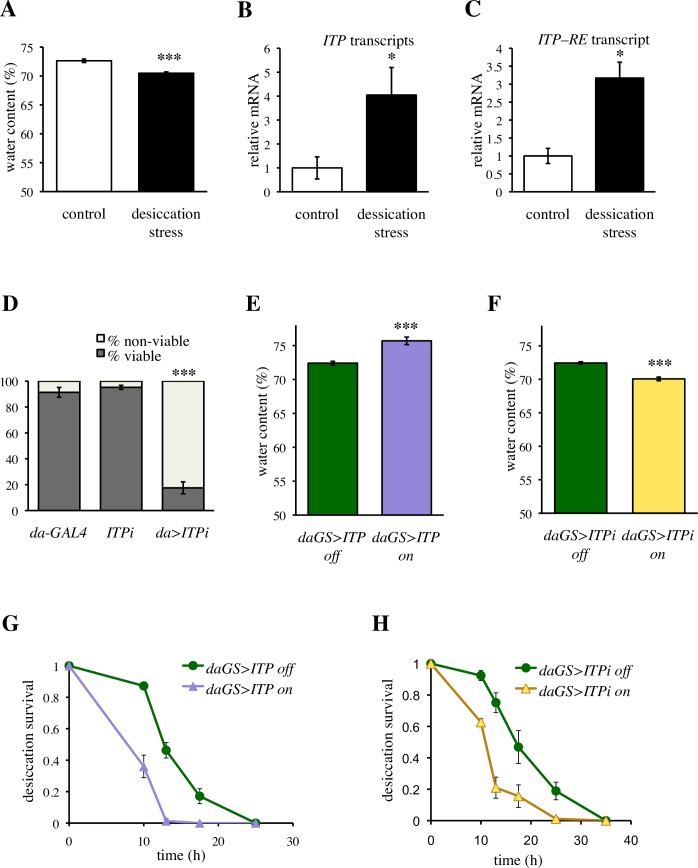Fig 1. ITP regulates water homeostasis.
(A) Short term (6 h) desiccation stress efficiently reduces body fluids. Two-tailed Student’s t–test: P < 0.001. (B) Desiccation stress increases expression of the ITP gene. A primer pair that detects all 5 isoforms (transcripts RC, RD, RE, RF and RG, FlyBase FB2017_06) was used. Two-tailed Student’s t–test: P < 0.05. (C) Desiccation stress increases the abundance of the RE transcript. Primer pair that detects solely this isoforms was used. Two-tailed Student’s t–test: P < 0.05. (D) Daughterless-GAL4 driven ITP RNAi (da>ITPi) results in developmental lethality. Fischer’s exact test: P < 0.001 for comparison with each control. Animals were analyzed in three replicates, Fischer’s exact test was done on pooled data. Sample size: da-GAL4 n = 595; ITPi n = 439; da>ITPi n = 566. (E) Daughterless-GeneSwitch-driven over-expression of ITP (daGS>ITP) increases the proportion of body fluids. Two-tailed Student’s t–test: P < 0.001. (F) daGS driven ITPi (daGS>ITPi) decreases the proportion of body fluid. Two-tailed Student’s t–test: P < 0.001. (G) Over-expression of ITP decreases desiccation resistance. Log-rank test: P < 0.001. Sample size: daGS>ITP off n = 83; daGS>ITP on = 70. (H) ITP RNAi decreases desiccation resistance. Log-rank test: P < 0.001. Sample size: daGS>ITPi off n = 88; daGS>ITPi on n = 89.

